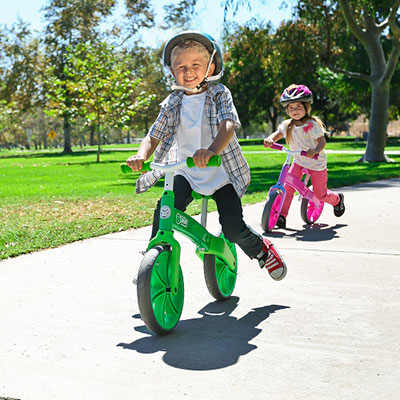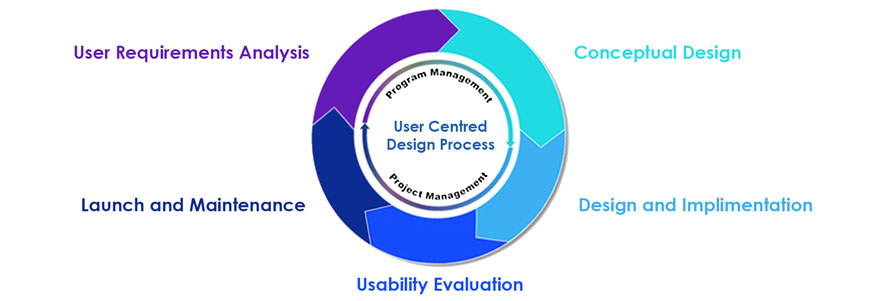Design Methods: User Centred Design
All too often we see products that have not been designed with the user in mind. They include fancy new features or utilise breakthrough technologies without being focused on what the user needs.
Your goal should be to optimise a user's experience with your product then it pays to look to the most important player in the design process - the users themselves!
User Centered Design, or UCD for those in the biz, is a valuable design method that can offer a more efficient, user-friendly experience for the user, which can in turn boost sales and increase customer loyalty.
Given a choice, people tend to buy products that are more user-friendly. Whose product do you want them to buy?
Make your product more user-friendly with User Centered Design
User Centered Design is essentially putting yourself in the position of your user and focusing on their needs, wants and limitations at all stages of the design and development process.
Products designed with emphasis on how the user needs or wants to interact with a product, instead of forcing the user to change his behaviour to use the product, ensures that the user is more likely to use the product.
Why you should consider User Centered Design
Building our understanding of the user and developing empathy with the user helps us design better products. It’s that simple. Empathy with our users helps reveal what they consider most important in a product. It shows us as Product Designers in Melbourne what they do, how frequently they do things and in what order. It gains us insight into the users expectations in terms of how a product should function, and what output is required and in what form.
Observation can help us develop empathy for our users. See our article "Being a better observer" in our Discovering Things series.
Anything which people can interact with can be improved for usability and usefulness. This can be everyday things, but also systems and processes.
Advantages and Disadvantages of User Centered Design
Advantages
- More efficient and effective products
- Easier to manage users' expectations and level of satisfaction with products
- Develops of a sense of ownership for the product by users when involved in design process
- Less product redesign and quicker integration into the environment
- More creative design solutions due to collaboration
Disadvantages
- Cost and time resources.
- Additional design team members (ethnographers, usability experts) maybe required for data collection and research
- Difficulty translating some types of data into design
- Risk of over specifying your product. Products can easily become too specific for general use and not readily transferable to other clients.
Becoming a User Centered Product Designer
User Centered Design is an iterative process. It is essential to constantly and progressively refine the design from early stages of concept development though to final product feedback.
Design -> Build -> Test -> record feedback ... REPEAT
6 Steps for User Centred Design:
1. Identify your target user group: Knowing who is going to use your product allows you to identify user scenarios and typical tasks users undertake.
2. Put yourself in the user's situation: Carry out the tasks that your users would do, in the environments where they would do them. eg. Work on a supermarket checkout or drive an unfamiliar car for a week. Make detailed notes or keep a diary to record your thoughts. If you want users to understand your product, you must first understand the user.
Empathy tools can also help to simulate specific user characteristics. Imagine wearing gloves and tinted glasses to simulate some of the physical effects of old age. You suddenly gain an insight into the limitations of users, but also ways to improve usability of products as they use them.
Other common methods to understand your user may include: focus groups, usability testing, card sorting, participatory design, questionnaires and interviews.
3. Design the total customer experience: Users prefer a product that is “user-friendly”. You’re aiming for a product to be easy to buy, easy to set up, easy to learn and easy to use. Making a product intuitive, engaging and useful for the user will enhance the users experience.
4. Engage user feedback: Feedback from prototypes or the first release of a product can be very valuable. This allows you to assess the competitiveness of the product in the market and to add value in your redesign. Any iterations should be driven by the users’ needs and wants.
5. Monitor User Feedback: Throughout the product life cycle monitoring user feedback and response to market changes can help keep your product new and exciting for users and stay competitive in the market.
User Centred Design helps you to consider your user at every stage of the Product Design process. Don’t forget the UCD essential activities:
- Gather requirements: understanding and specifying the context of use
- Specify requirements: specifying the user and organisational requirements
- Design your product: producing designs and prototypes
- Evaluate your product: carry out user based assessment of the product.
Bayly, from Melbourne, continues to bring you more ways to improve your Product Design in “Discovering Things”. Keep an eye out for next month’s feature: Brainstorming
Missed our article on How being a better observer will improve your design process? click here
Sign up for our newsletter for more stories and features in our Discovering Things series.
Don't miss out. Sign up for our newsletter now!

